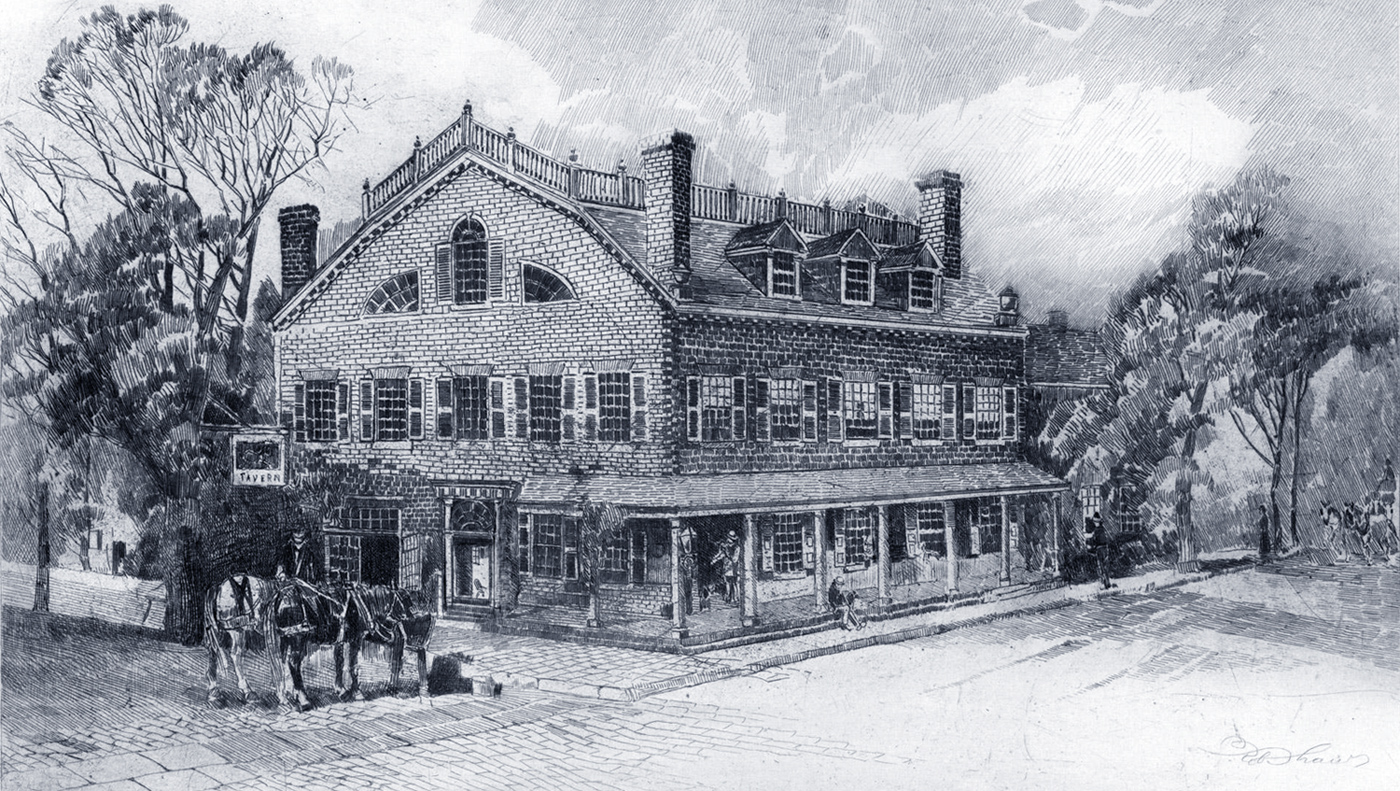
Fraunces Tavern, Drawing by Robert Shaw
Pencil signed etching (chine colle) of Fraunces Tavern, by the artist Robert Shaw (Delaware, 1859-1912), 1905. Was it made up or was it redrawn based on an older drawing? Read comments on the Mason's Arms page.
This and other drawings of the old City of New York, by the same artist, were created in the early 20th century for the Colonial Society of America. One of these drawings (from the New York Public Library), depicting the Middle Dutch Church, destroyed in 1882, has the following text printed on verso: "This is to certify that three hundred Artist proofs have been taken from this plate for patrons of the Colonial Society of America. This proof No. 81 prepared for Ms. Abraham Lansing". "Gen. Henry Edwin Treman, Honorary Pres. [et al.]. Attest, Theodore W. Compton, Secretary". The Historical Society of Pennsylvania holds the Colonial Society of America (30 prints) by Robert Shaw and James H. Flincken, 1906. The drawing above of Fraunces Traven was also published in the Memorial Etchings of the Historic Landmarks of America, etchings by the same authors, published by the United States Historical Society, 1921.
Samuel Hollyer (1826-1919) made a similar drawing referring to the year 1777, published at the same time, months later the Sons of the Revolution bought the property at 54 Pearl Street, site of the old tavern, in order to restore the architecture of the historic Fraunces Tavern. It is possible that both artists had access to some older illustration of one of the Fraunces Taverns and then made an artistic representation or copy of it.
Samuel Fraunces owned a few taverns in New York. At least three of them were known as Fraunces' Tavern at the time, but only two was owned by Fraunces around 1777: Queen's Head and Mason's Arms (in two periods, 1756-1762 and 1775-?).
This tavern, in a rural setting, was certainly not the iconic Queen’s Head Tavern, better known today as Fraunces Tavern, located near the docks in an area where commercial buildings predominated. In the 18th century, the old ports area had almost no trees, as the view of New York in 1798 shows.
This could be, however, the Mason's Arms tavern, located "in the Fields", as a mead and tea garden, or the Vauxhall Garden in the old Bowling Green, both established in lots located in the old Church Farm.
Before 1750, Broadway did not extend to the north beyond St. Paul's Chapel. By 1790, it was paved from the Bowling Green to Vesey Street.
Some cobblestones pave the street in front of the tavern of the Robert Shaw's etching. This kind of pavement began to be laid on some streets of the City of New York in the 17th century and it was expensive. This street would be Broadway if this etching represented Mason's Arms or it would be Greenwich Street in the case of Vauxhall Garden.

A later colorized version of the original black and white print.

A tavern owned by Samuel Fraunces, as it would have been in 1777, according to a drawing by Samuel Hollyer (1826-1919), published in 1905 in the Old New York, Views by S. Hollyer. This engraving could have been copied from another old one, the same way Hollyer did with the View of the Bowling-Green, published in 1830.
|
Copyright © Geographic Guide - 18th Century NYC. Historic Buildings. |
Fraunces Tavern, Drawing by Robert Shaw
